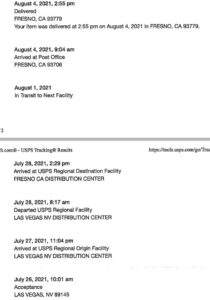In today’s mail I received some notices from a tax agency. That’s not unusual: We have many Tax Information Authorizations and Powers of Attorney on file. And it wasn’t out of the ordinary that all three notices were for the same client. What was unusual is that these notices were not dated on the same date: These were sent (most likely) at intervals of three weeks, with the most recent notice (probably) being mailed this week, and the other notices being mailed three and six weeks ago. How can clients timely respond to notices when the Post Office (an agency of the United States Government) does not timely deliver the mail?
Yet under the law a notice mailed regular mail is considered received in one week. Many state tax agencies don’t have the requirement to send Notices of Deficiency (or the state equivalent) by certified mail. Unless my client or I have a working crystal ball (and neither of us do) it’s impossible for us to timely respond to these notices.
And the delays aren’t getting better. A different client of mine who resides overseas just received a notice mailed three months ago asking for a response two months ago! Yes, Covid has played havoc with overseas mail (and it turns out the notice my client received is incorrect), but I have other examples. Late last month I mailed a certified letter on behalf of a client to the IRS in Fresno. Look at the tracking on this:
This was a request for a Collection Due Process Hearing. It got to Fresno in two days from Las Vegas, but then sat around in Fresno for one week before being delivered to a PO Box…in Fresno.
Unfortunately, government agencies’ assumptions about mail deliveries need to be modified based on today’s realities. Two years ago, it was reasonable to assume a letter from Las Vegas would be delivered to Fresno within three business days (and that was true pretty much anywhere in the United States). Today, such an assumption is unwarranted. Tax agencies need to add additional time for taxpayers to timely respond to notices.
